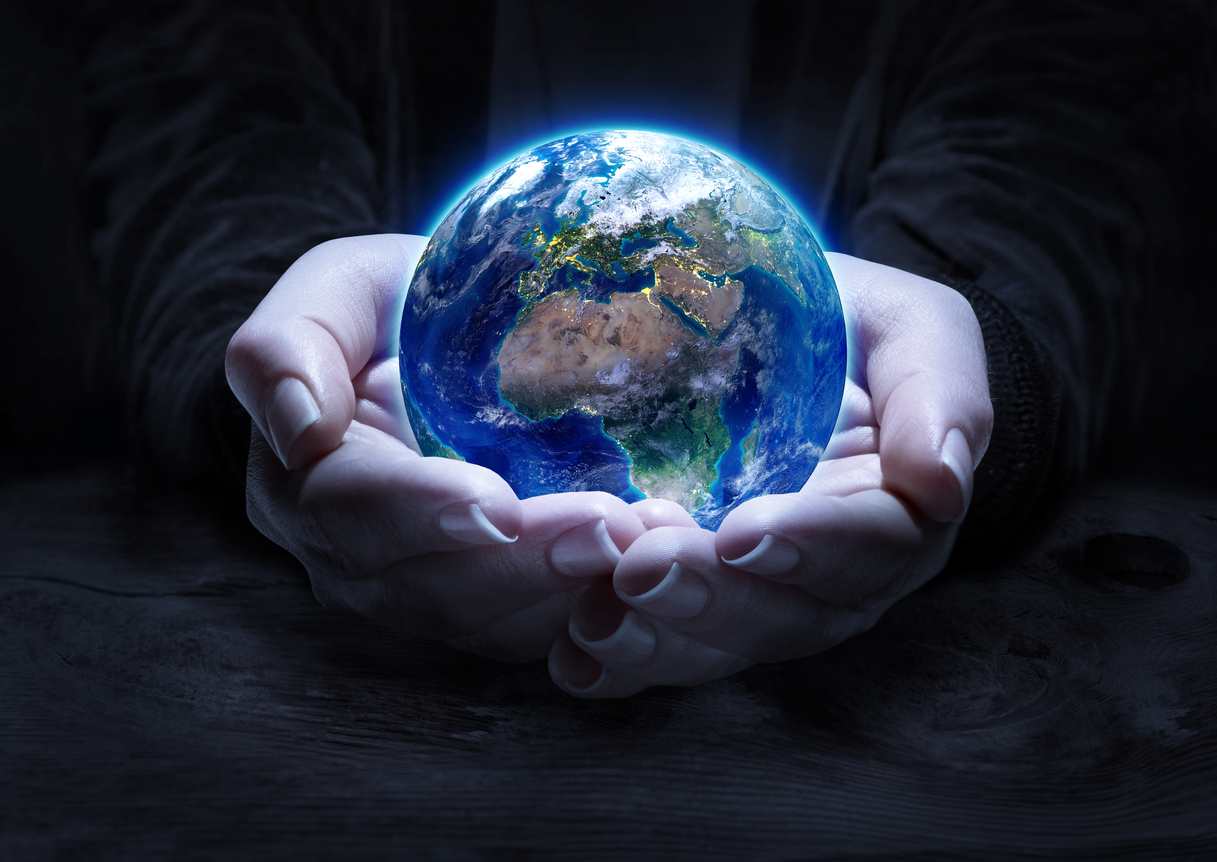
A drop of gratitude
When I began this week’s musings about boat pose and water the quote “the sea is so great, and my boat is so small” came to mind. These words graced the desk of President John F. Kennedy. They are fragments of an Old Breton prayer inscribed on a wood block given to Kennedy by Admiral Hyman Rickover.
I did not recognize Rickover’s name. A few clicks later I learned he helped develop naval nuclear propulsion and controlled its operations for three decades, accomplishments recognized by two Congressional Gold Medals. His career included 63 years of active duty as the longest serving naval officer in U.S. history. That is a lot of time. I wondered how much time he had spent “out at sea?” Clearly, enough for him to remain aware of himself in relationship to the sea.
Water, water everywhere. When we are at its edges, atop or within it, we feel a connection. Perhaps it was that moment of awe when we saw The Blue Marble photo from the 1972 Apollo 17 crew. Our small, blue, fragile, watery dot of a planet. Or maybe our recognition of the water within. (Water makes up 60% of our bodies.)
In tiny tear drops and vast oceans water has many forms, colors and textures. It fills and flows, liquid energy shimmering when it catches the light. At the micro and macro scale, we yearn for it, for the way it looks and sounds, tastes and feels. We honor its tender sprinkling to bless and to heal and its ferocious capacity to destroy.
In Blue Mind, Wallace Nichols, a Ph.D. and ocean advocate and educator, tells us why water matters so much to us. The subtitle of his book is more sentence than subtitle; The Surprising Science that Shows How Being Near, In, On, or Under Water can make you Happier, Healthier, More Connected and Better at What You Do.
The book is chocked full of the research behind these claims. Increased calm, diminished anxiety, a richer connection the natural world and to one another and a better sense of overall health are benefits we innately know to be true. It’s why we go to the beach or the lake or any waters edge so often. He also writes about increased creativity and professional success. I’ll let you read the book and make your decision about those.
The part of the book I liked best was the story of the million blue marbles. It began with a presentation where he passed out blue marbles. He had the audience hold the marble at arm’s length like it was the earth. A small, blue, fragile, watery dot. Then to bring it close and look at the light through the marble, to feel like they were under water. He explained if that marble were a spoonful of water, it would contain trace amounts of virtually every element, holding hundreds of millions of organisms. As I read, this made sense. But the story then shifted from environmental advocacy to something unexpected.
“Think about someone you are grateful for, someone who loves the water or is helping to keep the planet’s water clean and safe and healthy. Or just someone you appreciate? When was the last time you expressed your gratitude that they are in your life?”
He offered an invitation. “Take the marble, give it to that person, tell them it represents the blue planet and your gratitude. Then ask them to share the marble with someone else.”
He’d made a connection between the marble, water and gratitude that resonated and spread. Within 18 months nearly a million people received or gave marbles. That’s a lot of marbles.
Like water, gratitude has many forms, colors and textures. As a quick smile or an extravagant gift it fills and flows. We yearn for it. We honor its tender sprinkling to bless and to heal. In its absence, it has a ferocious capacity to destroy.
Gratitude, like water, is life-giving. You don’t even need the marble to give. Be open to the aquifer of gratitude you have within. Let it overflow in your life.
Want to see how grateful you are? Try this gratitude quiz.
Leave a Comment